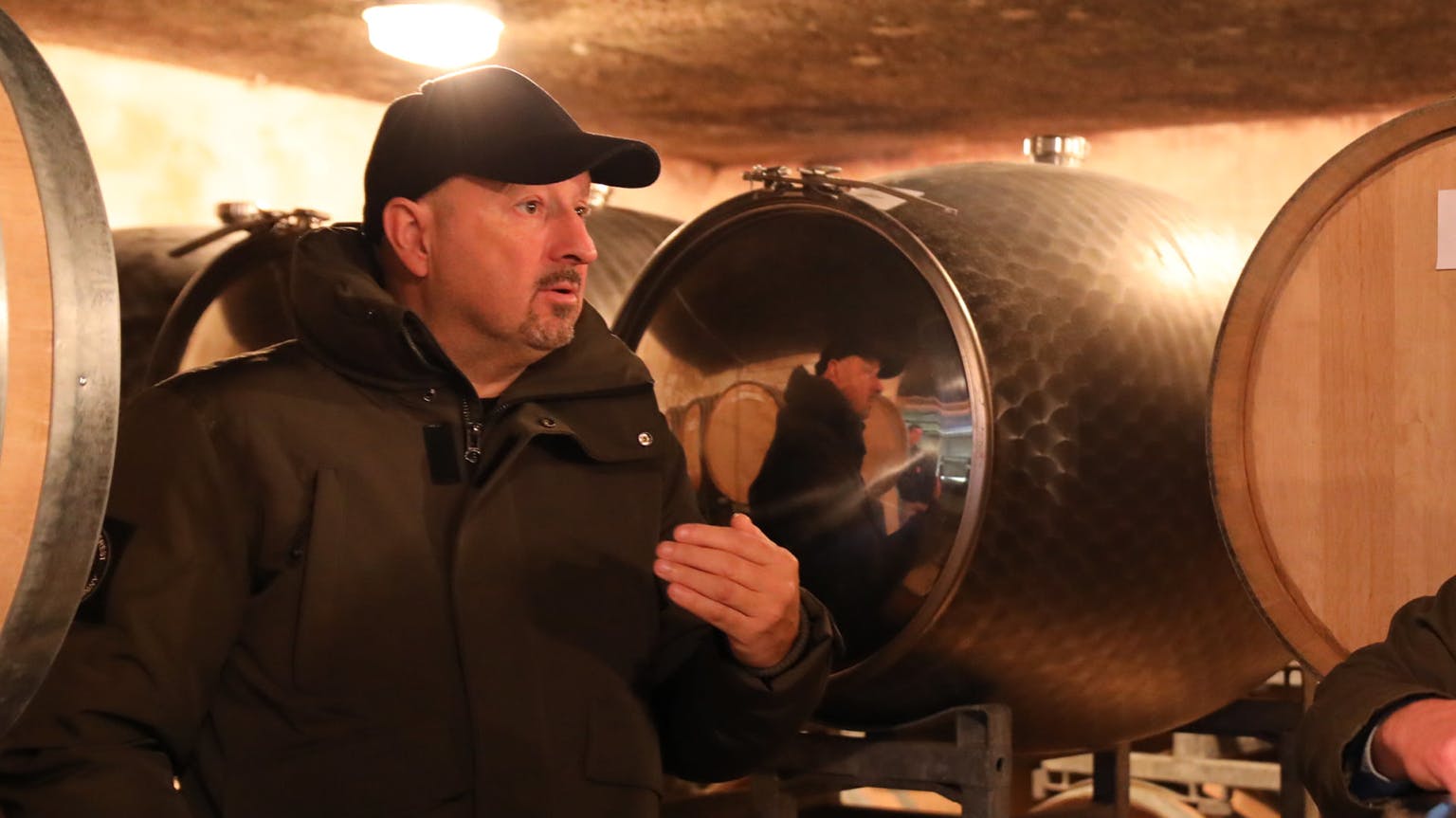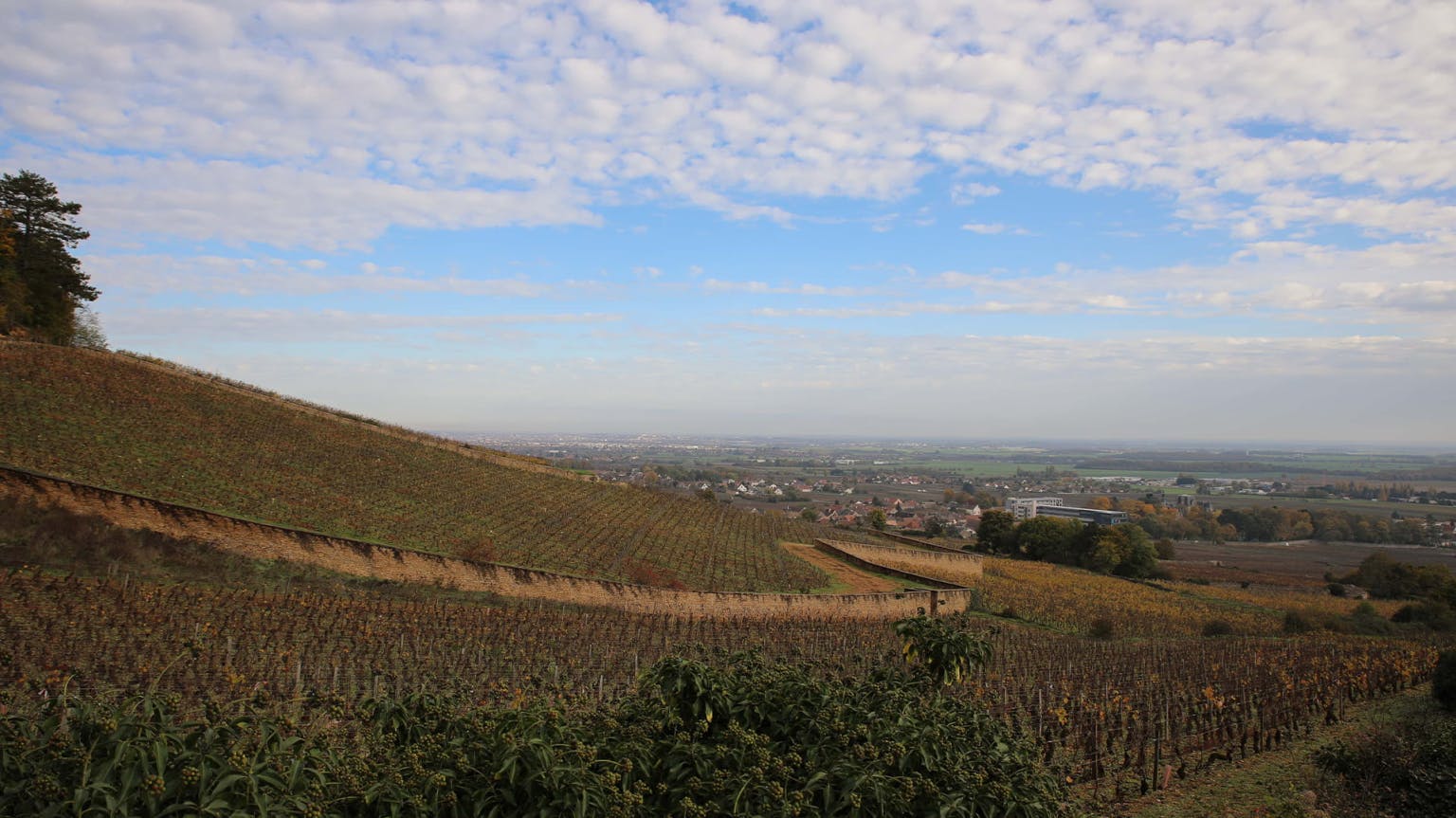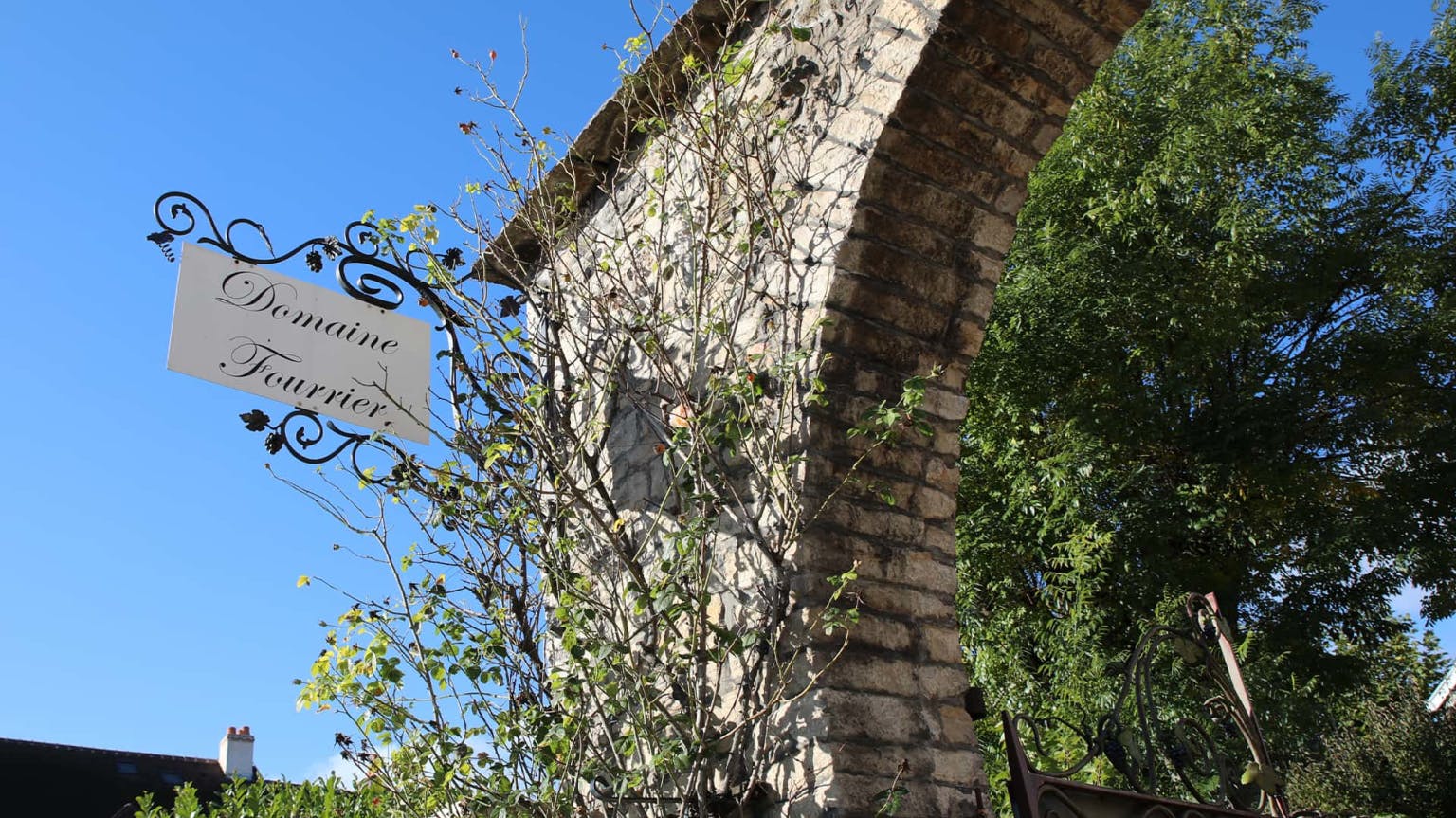Go into any winery in the world, and it’s now unusual not to find a glass wine globe or clay amphora lurking in the corner. Oak has long been the traditional ageing vessel for wine – light, easily transportable, the grain fine enough to allow micro-oxygenation (aiding the polymerisation of tannins, making the wine more supple), and, especially when new, the ability to add toasty, spicy complexity. But with technology and global warming, many winemakers are looking beyond oak – and Jean-Marie Fourrier is one of them.
“We noticed the barrels generating the most problems were new oak,” says Fourrier. He and his team had been monitoring each barrel during élevage, and started noticing a trend. They observed that the volatile acidity was 0.2-0.3% higher in first-fill barrels. To compensate for the higher volatility, Fourrier had to add more sulphur to those barrels, something that he’d like to avoid – feeling that higher sulphur additions can mask the terroir.
But why were the new barrels the most volatile? With climate change, trees – Fourrier argues – are growing more quickly, meaning that their trunks don’t have the same density, and this is responsible for the increased volatility. He’s not alone in paying attention to the density of wood; it’s something that Clos de Sarpe has started monitoring, weighing each barrel and noting how this impacts the wine during élevage. Fourrier also feels that climate change has impacted cork, as he told me in 2021 – noting how cork is harvested every seven to eight years versus the 20 of yesteryear. The corks are less dense and this leads to higher oxygen transfer – it’s one reason that he chooses to wax his wines (instead of metal capsules), to help counter the quality of the cork itself, something that Olivier Lamy also believes is important.

With the extremes of climate change, the size of harvests varies more significantly than ever before – from the lows of 2021 to the highs of 2023. The pHs of wines are higher, making winemaking all the more tricky – a more challenging environment for yeast and higher risks of bacterial spoilage. Producers need to handle their wines more carefully, as well as juggle the vessels required for such extreme yield variations. If barrels are left empty, they become a breeding ground for bacteria, especially brettanomyces – so having the right number of vessels for your wine each year is essential, not to mention retaining a balance of new and old wood, to keep both a consistent style and not over- or under-oak the wines. (Some producers also only keep barrels for a certain number of years, again to avoid bacterial spoilage.)
“How can I age wine, keeping freshness, keeping purity?” says Fourrier, “Is 100% oak the direction? I don’t think so, to be honest, I think it’s a balance.” There were two options for him: either increase the level of sulphur additions, purely for the “ideology of wood” – or to evolve.
For him, using amphorae and stainless steel barrels alleviates some of these pressures – offering lower volatility, almost no bacterial risks and the vessels can be stored empty and more easily cleaned, not to mention they don’t need replacing. While he notes he is not about to release a “Cuvée Amphora”, ageing 20% of his wines in these alternatives allows for lower volatility, lower total sulphites and, in his view, helps give the wines freshness, complexity and a sense of place.
The 2022 vintage is the latest to bring these challenges to the fore; a return to a year born of global warming after the tricky, cool 2021. While for once they escaped the threat of frost, conditions were hot – although, unlike in 2019 or 2020, they received enough water to allow for a more plentiful crop. Gevrey-Chambertin saw a massive storm in June, bringing with it 100mm of rain in just an hour or so, flooding the streets of the village. Although it seemed devastating at the time, it was exactly what the vines needed to survive the dry stretch to the end of August and harvest at the start of September.

Although harvest dates creep earlier and earlier, Fourrier feels that some are picking prematurely (“We don’t do a Crémant,” he jokes). “Terroir needs to be revealed by phenolic maturity,” he explains, saying that his team started in early September. With the warmth of the year, he used around 15-20% whole-bunch to help retain freshness and elegance, and, as we’ve seen elsewhere so far, the alcohols are modest – sitting between 12.8 and 13.5%. The wines combine some of the characteristics of 2009 and 2015, Fourrier feels, yet are fresher, with an approachability that – as we have found – will make them easy to drink in their youth, despite having the structure and weight to age.
But now Fourrier’s mind is occupied by the 2023s, the wines just in the cellar – absorbed by the potential of the next vintage. It's this slow and constant evolution, the change and challenges, year in, year out, that keep him interested. With only one shot every 12 months, this business is, he says, “an internship of 40 years”. And it’s that approach – a modesty in the face of everything despite his reputation, constantly pushing forward, studying everything and never complacent – that makes Fourrier one of the region’s leading names. We’ve no doubt that his 2022s will be another display of his mastery.
Browse all current listings from Jean-Marie Fourrier and Domaine Fourrier, or read more about Burgundy 2022

